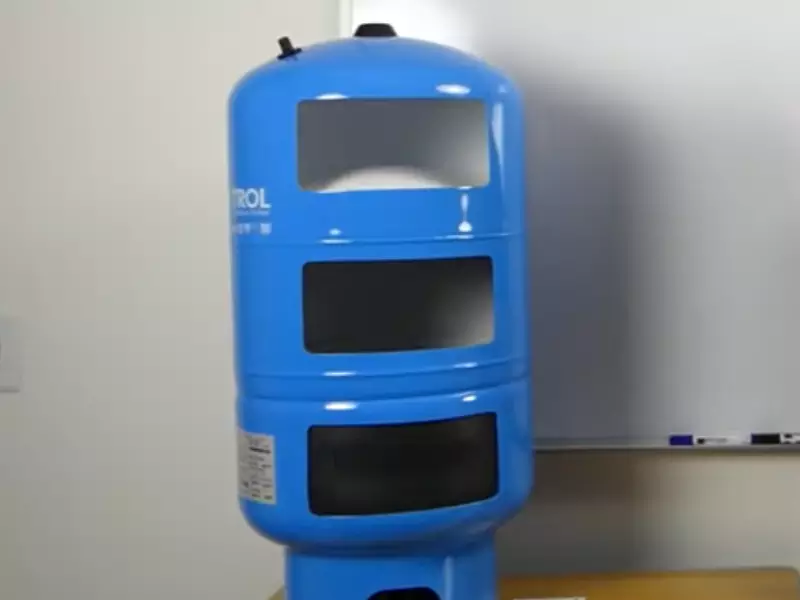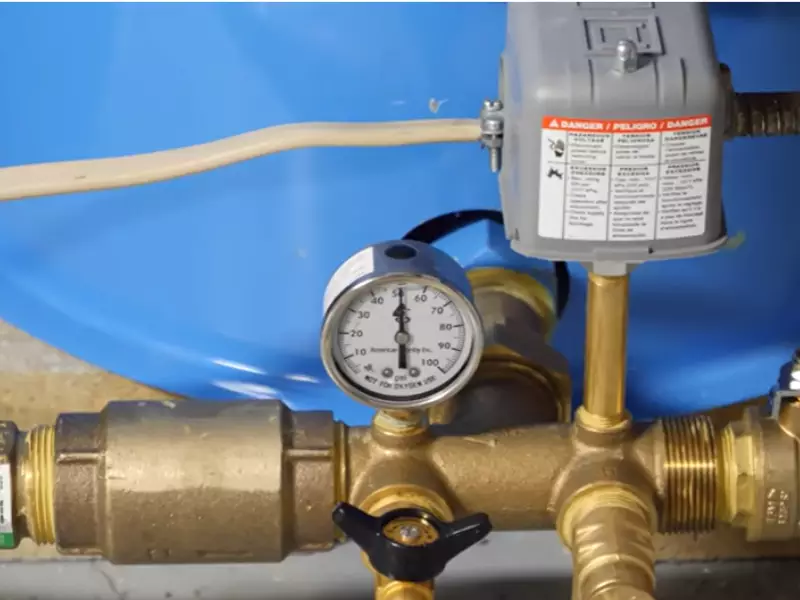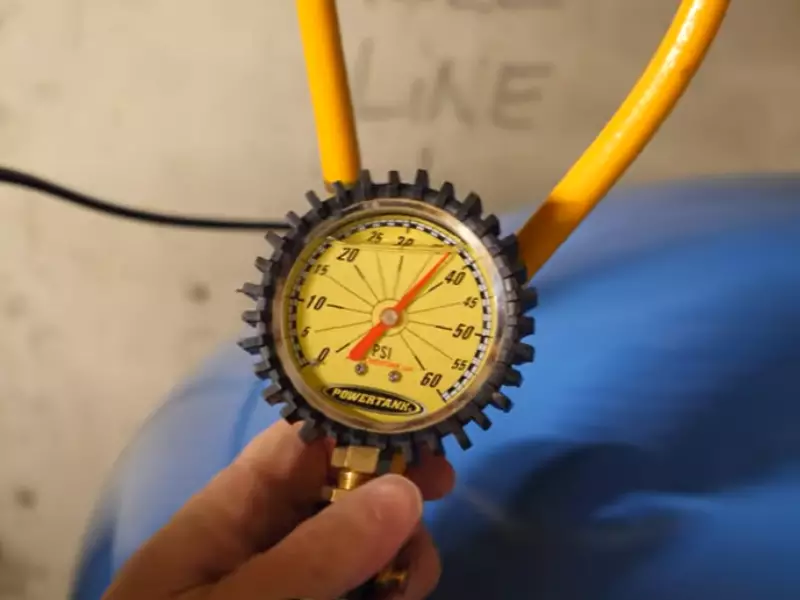Water pressure tanks play a pivotal role in many households and industries, ensuring consistent water flow and optimal functionality. These systems, while reliable, occasionally face problems that may hinder their operation, disrupting daily tasks that depend on them. As with any piece of equipment, it’s essential to recognize these problems early on and address them promptly to ensure efficiency and longevity.
Water pressure tanks primarily work to maintain a consistent water pressure level in plumbing systems. When issues arise, they often lead to fluctuating water pressure or even total loss of water access. A well-maintained tank is integral to a hassle-free water supply, and being equipped with the knowledge of common problems can be invaluable.
Regular maintenance and troubleshooting can prevent most complications and prolong the lifespan of a water pressure tank. Hence, being aware of potential issues and their solutions becomes imperative for every user.

Water Pressure Tanks Details
Basic Functions
A water pressure tank’s primary purpose is to ensure a balanced water flow. It achieves this by:
- Storing pressurized water.
- Releasing water when a faucet is turned on, ensuring steady flow.
- Activating the well pump only when necessary, thus conserving energy.
Components Overview
While the design might vary slightly across different models, most water pressure tanks consist of:
- Bladder: A rubber compartment that separates air and water.
- Air Valve: Assists in maintaining the desired air pressure.
- Pressure Switch: Regulates the pump’s activation based on water pressure.
Common Problems
Water pressure tanks, while being durable and reliable, aren’t immune to issues. As homeowners rely heavily on consistent water supply, it’s crucial to recognize and understand the most common problems that arise. This not only allows for timely resolution but also prevents further complications.
Loss of Pressure
This problem is arguably the most noticeable as it directly impacts daily activities, such as taking showers, washing dishes, or watering plants.
Causes
- Faulty Pressure Switch: One of the primary causes, a malfunctioning pressure switch may not signal the pump to activate or deactivate at the correct times. Over time, wear and tear, as well as external elements like dust or moisture, can impact the switch’s performance.
- Water Leaks: Even minor leaks in the plumbing can significantly reduce water pressure. These leaks can be due to aging infrastructure, damage during other home renovations, or even natural wear and tear.
- Blocked Pipes: Over time, minerals from the water, as well as external contaminants, can accumulate in the pipes. This not only narrows the path for water but can also lead to water quality issues.

Solutions
- For a Faulty Pressure Switch, a thorough inspection is crucial. Sometimes, it’s a matter of cleaning the switch or tightening some connections. In more severe cases, replacement might be the best option.
- For Water Leaks, start by identifying the source. This might involve checking visible piping or calling in professionals with specialized equipment. Once the source is identified, the fix could range from simple sealants to replacing sections of the pipe.
- Blocked Pipes often require professional intervention. Descaling solutions can help in removing mineral build-up. However, significant blockages might necessitate pipe replacement.
Waterlogged Tanks
A waterlogged tank can be a silent problem until it leads to more noticeable issues, like inconsistent water supply or pump malfunctions.
Recognizing Symptoms
- If your pump is cycling too frequently, it’s a clear indication that the tank might be waterlogged. The constant switching not only strains the pump but also leads to energy inefficiencies.
- An inconsistent or reduced water supply, despite having an operational pump and no apparent leaks, often points towards a waterlogged tank.
Causes
- Damaged Bladder: The bladder is the heart of the pressure tank. It ensures the separation of air and water. A rupture or leak in the bladder will let water occupy the air space, leading to waterlogging.
- Faulty Air Valve: This component ensures the air pressure inside the tank is maintained. If it malfunctions or leaks, the balance between air and water is disrupted.
Fixes
- A Damaged Bladder often requires replacement. It’s a complex task and might require professional help. Regular inspections can help in detecting early signs of wear and tear.
- For a Faulty Air Valve, sometimes it’s as simple as tightening or cleaning. However, recurrent problems might indicate the need for a valve replacement.
Short Cycling
Short cycling is more of an annoyance before it turns into a significant problem. It not only leads to inconsistent water flow but also increases energy consumption and strains the pump.
Recognizing Symptoms
- If the pump starts and stops more frequently than usual without significant water usage, it’s a sign of short cycling.
- An inconsistent water flow, where the pressure seems to drop and then suddenly spike, can also indicate this issue.
Causes
- Blocked Air Charge: The air charge in the tank helps in maintaining pressure. Any blockage or disruption can lead to improper pressurization, causing short cycling.
- Incorrect Pressure Settings: Sometimes, settings on the tank or the pump can go awry, either due to manual errors or electrical glitches.

Solutions
- Restoring the Air Charge often involves releasing all water from the tank, then refilling it. This process resets the internal pressure.
- Pressure Settings can be adjusted manually. However, recurrent issues might indicate a deeper electrical problem or a malfunctioning component.
Damaged Bladder
The bladder is one of the most vital parts of a water pressure tank. It ensures water and air are segregated, maintaining consistent pressure.
Recognizing Symptoms
- A drastic reduction in water output, despite the tank being full, is a significant sign. The pump might seem to be working overtime, but the water flow remains minimal.
- Irregular pump activity, where it runs for prolonged periods or switches on/off without reason, can also hint at bladder issues.
Causes
- Wear and Tear: Like any other component, the bladder isn’t immune to the effects of time. Constant expansion and contraction can lead to weaknesses or tears.
- Overpressure: Excessive pressure, often due to external sources or malfunctioning components, can strain the bladder, leading to ruptures.
Solutions
- Regular inspections can help in early detection of Wear and Tear. While minor damages might be repairable, a significant tear will necessitate a bladder replacement.
- Monitoring system pressure and ensuring it remains within recommended levels can prevent Overpressure situations. External pressure regulation devices or system resets can be valuable in such cases.
Routine Maintenance Tips
No machine or system is truly “set it and forget it.” Regular maintenance not only ensures optimal performance but also extends the lifespan of the water pressure tank. Here are some in-depth pointers:
- Regular Inspections: This doesn’t always mean calling in the professionals. Homeowners can routinely check for obvious signs of wear, rust, leaks, or unusual noises. Such proactive checks can lead to early detection and resolution of problems.
- Annual Pressure Checks: Over time, the pressure settings might drift from the optimal levels, either due to component wear or external factors. An annual check ensures the system operates within the recommended range.
- Replacing Older Tanks: Like any equipment, water pressure tanks have a lifespan. If your tank is nearing or has exceeded its expected operational years, consider a replacement. Newer models often come with enhanced efficiency and features.
- Avoiding Overpressure: External devices, like pressure regulators, can be installed to ensure the system doesn’t experience excessive pressure. Regular checks and resets can also help in maintaining the balance.
Frequently Asked Questions
How often should a water pressure tank be replaced?
Most tanks last around 10-15 years. However, with regular maintenance, some can extend beyond this timeframe.
What causes a water pressure tank to become waterlogged?
The most common cause is a damaged bladder. When it ruptures, water occupies the space meant for air, leading to a waterlogged condition.
Can I fix a damaged bladder, or should it be replaced?
Minor issues might be repairable. However, if the damage is extensive, replacing the bladder is often the best solution.
Conclusion
A water pressure tank, being a vital component of many plumbing systems, requires diligent care and maintenance. Recognizing common problems and addressing them in a timely manner ensures the system remains functional, providing consistent water flow.
As technology advances, solutions to these problems become more efficient and user-friendly, making the management of water pressure tanks simpler for every homeowner. Knowledge, as they say, is power. Armed with the understanding of potential issues and their solutions, you can ensure the longevity and optimal performance of your water pressure tank.